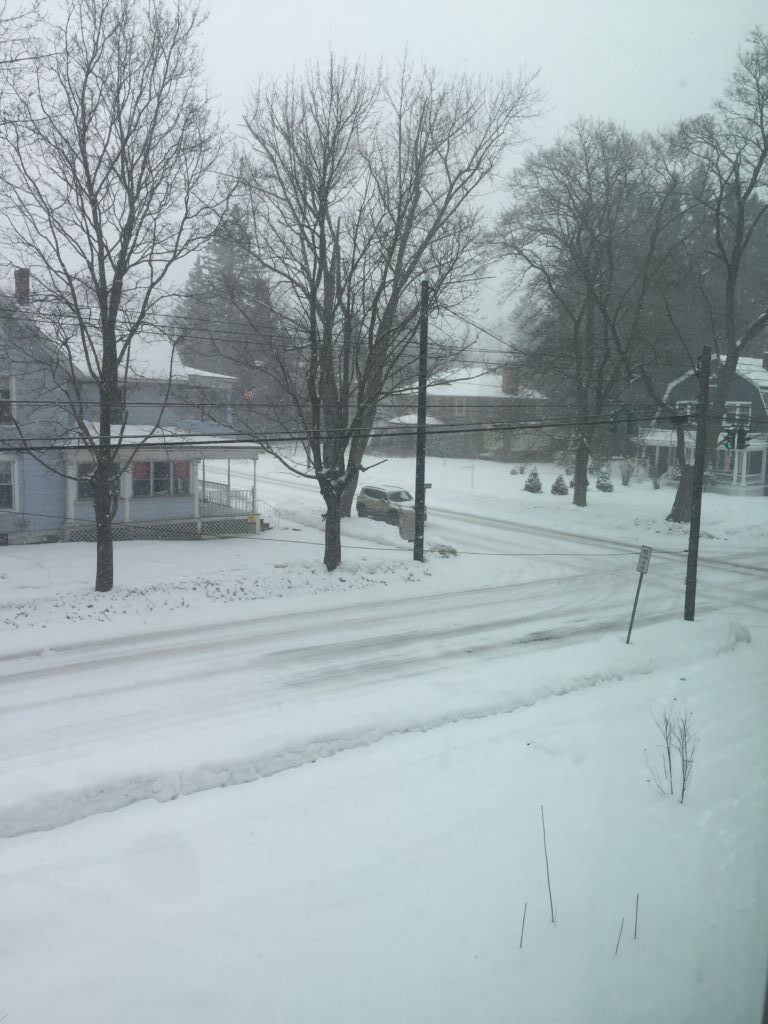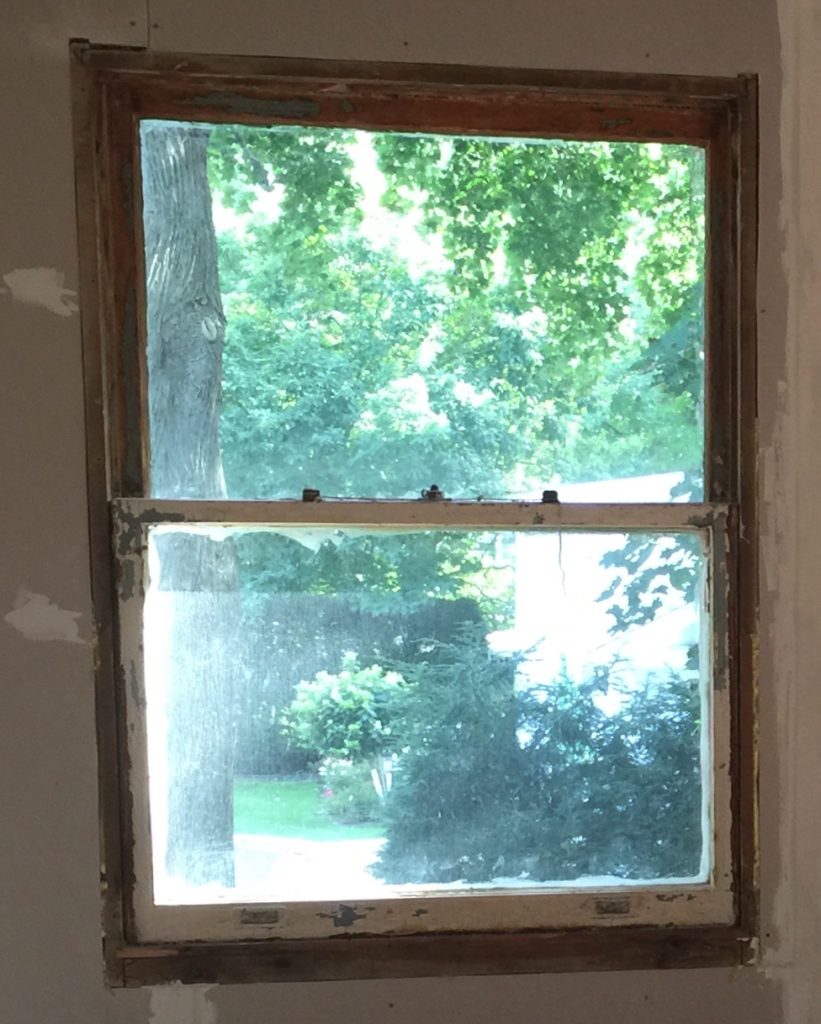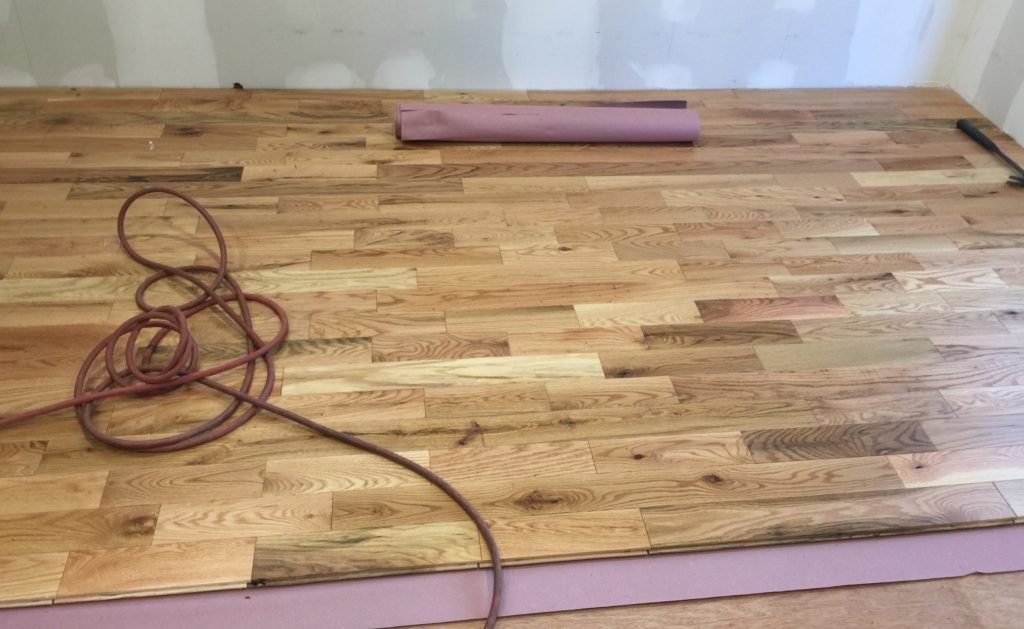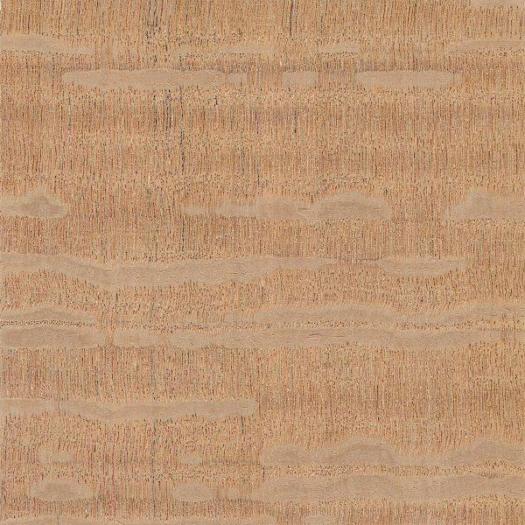First, Winter Storm Maya blessed us with a beautifully plush fourteen inch cover of fresh snow yesterday.

Now to our bedroom… next on our list, Scott needs to tackle the windows and build window frames. Only one of the windows in the bedroom has been replaced (due to someone shooting some sort of projectile through it when our cottage stood empty, waiting for us to discover it.)
The other windows rattle and wobble… oblivious to the outside elements they allow to enter the home. (Horse flies love to crawl through the slits.) And, the layers of paint! Scott and I both LOVE the natural grains of woods.

How anyone covered them… (apologies all of you with painted woodwork). We know, it was and is what many people prefer. But, Scott and I are both lignophiles… lovers of wood… enamored by the feel, unique grains, and patterns…
Speaking of woods… just a bit about why we are so besotted by woods.
Woods have three basic grains, but many variances. The first of the basic grains is…
Open or Coarse-Grain
Found in Butternut, Pine, Oak (we have large pored red oak for our kitchen floor) and other woods with large pores.)

Western Red Cedar, Redwood, Cypress, Poplar and Aspen have straight grains
White Oak and Beech are relatively straight
Walnut ranges from straight-grained to patterned
Mahogany is usually straight-grained, but can have blisters, stripes, or mottled patterns. (We had a small section of mahogany in the home where I grew up. It was beautifully mottled.)
Ash has a wide grain, sometimes with brown streaks.
Closed or Fine-Grain woods have ‘close’ growth rings.
Alder – fairly straight grain.
Maple, Birch, and Rosewood – subtler, straight grain.
Hickory – straight to patterned
Cherry and Poplar – fine, straight grain.
And, our standby, pine, has a straight grain, which is the flooring.for the majority of our cottage.
Plus, I must mention Knotty Pine, a lightweight straight grain wood with a fine, even texture with prevalent small tight knots. Daddy and my two brothers put knotty pine on the walls and ceiling of our living room in our home in Memphis. Daddy, ever the quiet jokester, gave me (I was 8 years old) the job of counting all the knots so we could report the number to the government. (There were 2,837 knots)
Figured
Then, when we choose to be really creative, we could add a special touch by choosing figured woods. They have unusual characteristics not specific to one type of tree, i.e.,
Bird’s-eye wood has spots, or dimples, that resemble eyes.
Fiddleback wood is the wood used for the backs of violins. It has a series of ripples.
If fungus invades wood, it creates spalted wood (black streaks running through in various patterns).
Other figures found in woods are quilt, silver, ribbon, burl, crotch and curly figures.
Crotch wood is very interesting. It is found where a two large branches or trunks meet… producing swirls and designs in the wood.
Then quickly, let me mention:
Exotic Woods – with unusual grain characteristics.
Zebrawood – swirling dark lines
Lacewood, from Australia – resembles hammered copper

Tigerwood, from South America – dark orange with a striped grain resembling tiger stripes.
Cocobolo – a deep orange with dramatic black striping.

Teak – strong and weather resistant
To name a few…
Since I became so carried away explaining why we are so dotty about woods, tomorrow I will continue with our bedroom window frame construction…